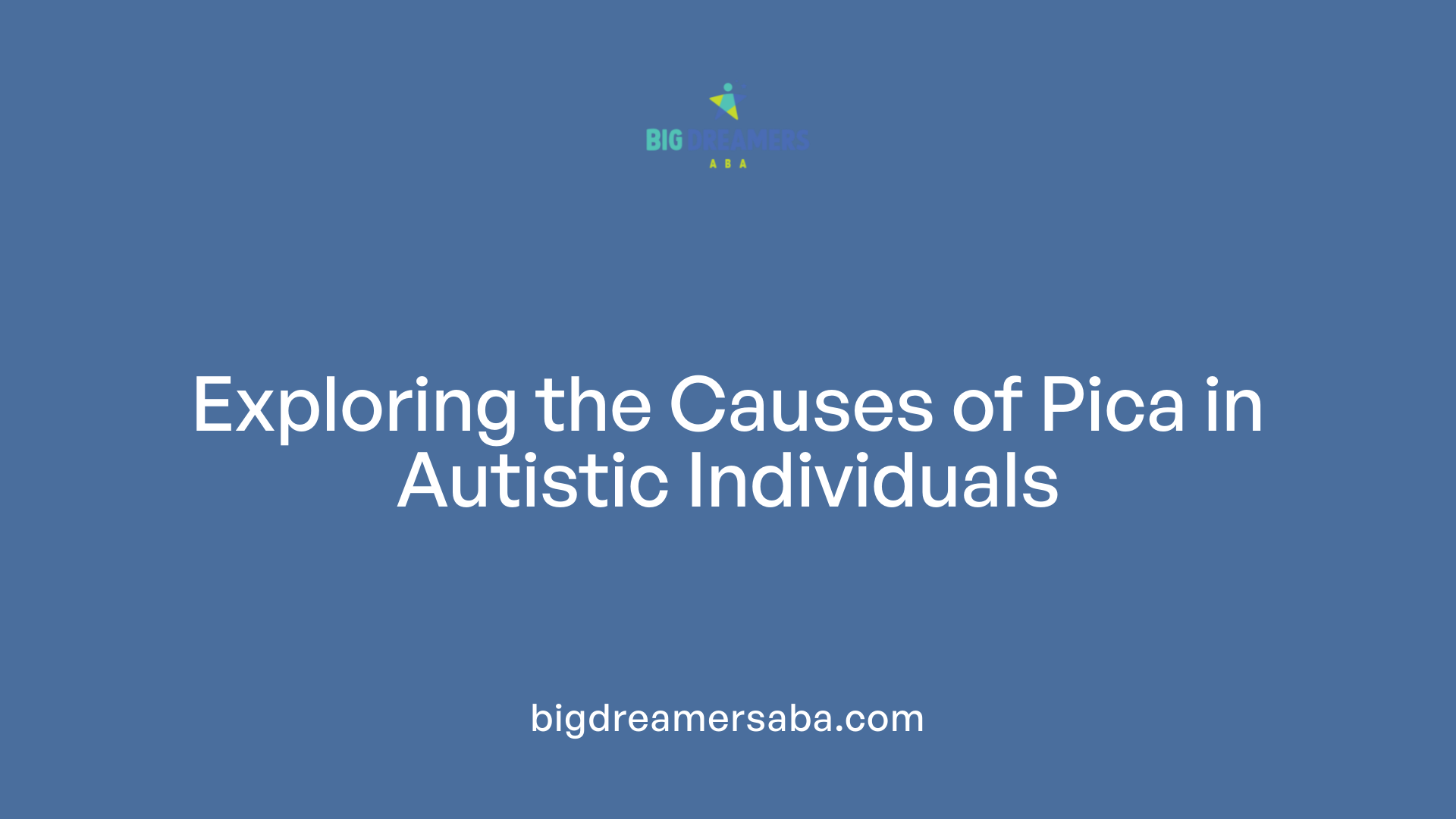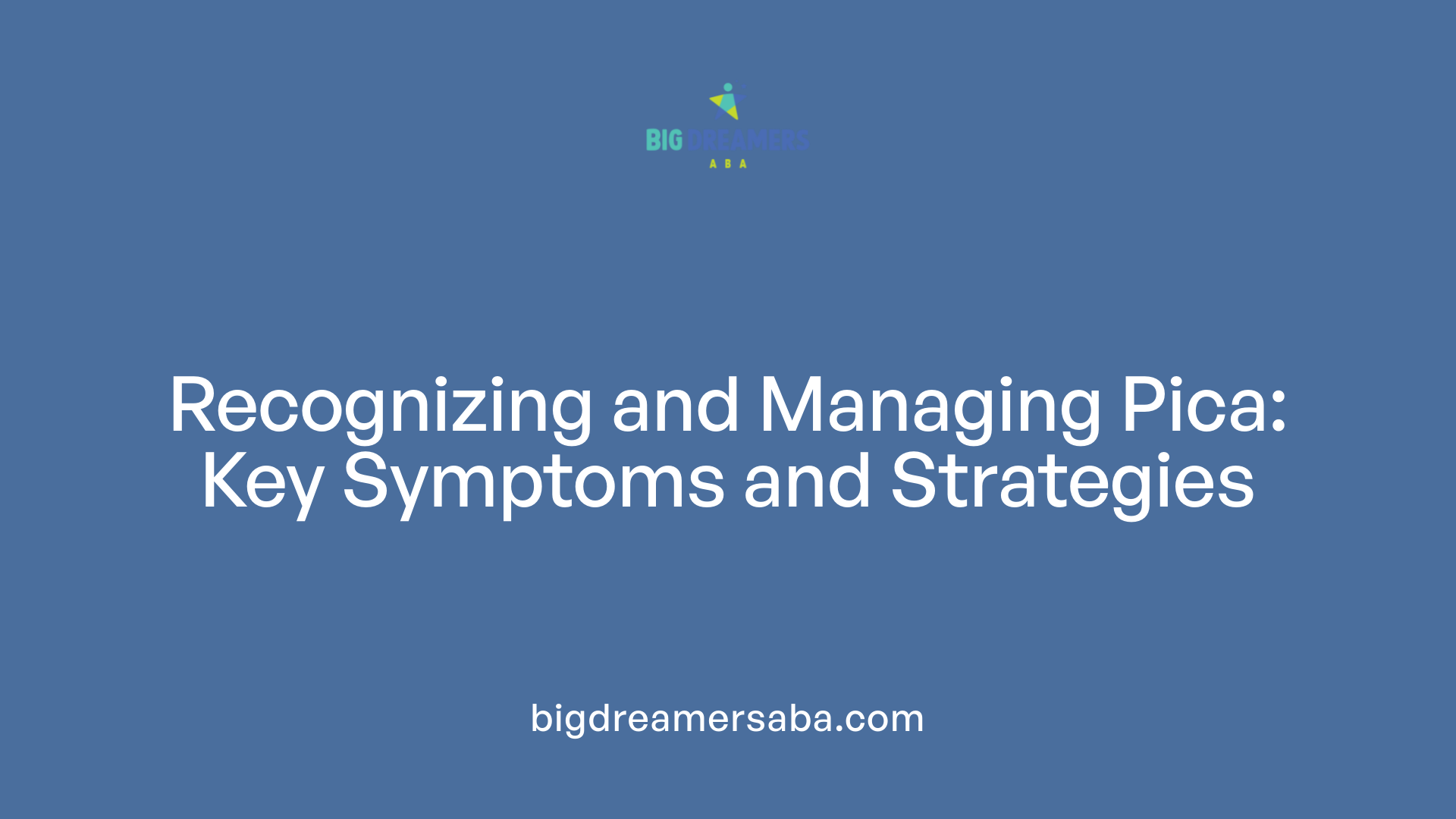Pica and Autism
Exploring the Link Between Pica and Autism

Understanding Pica in the Context of Autism
Pica is a behavior characterized by the consumption of non-food items and is notably more prevalent in individuals with autism spectrum disorder (ASD). The relationship between pica and autism is complex, involving sensory feedback, nutritional deficiencies, and developmental factors. This article aims to explore the causes, symptoms, health implications, and management strategies for pica in autistic individuals, providing evidence-based insights to support families and caregivers.
What is Pica and its Connection to Autism?

What is pica, and how is it related to autism spectrum disorder (ASD)?
Pica is an eating disorder characterized by the persistent consumption of non-food items for a duration of at least one month. This behavior is considered developmentally inappropriate and not part of culturally accepted practices. Pica is notably prevalent among individuals with autism spectrum disorder (ASD). Studies reveal that around 23.2% of autistic children and as many as 60% of autistic adults engage in pica behavior.
The motivations behind pica in autistic individuals can vary significantly. Common reasons include:
- Sensory-seeking behavior: Children may find comfort or relief from the textures of non-food items.
- Nutritional deficiencies: Low levels of essential nutrients like zinc or iron can trigger cravings.
- Anxiety relief: Some may resort to pica as a coping mechanism in overwhelming situations.
Health implications of pica
Pica can pose serious health risks, including:
- Bowel obstructions: Swallowing non-food items can lead to gastrointestinal blockages.
- Toxicity: Ingesting items like paint chips can result in lead poisoning.
- Nutritional deficiencies: Continuous ingestion of non-nutritive substances can interfere with proper nutrient absorption.
To address pica, healthcare professionals recommend a multidisciplinary approach, which includes dietary adjustments, behavioral therapies, and environmental modifications aimed at improving safety and reducing the risks associated with this behavior.
Understanding Chewing Behaviors in Autism: Pica vs. Oral Stimming

What is the difference between pica and oral stimming in autistic individuals?
Pica and oral stimming manifest as distinct behaviors in autistic individuals.
Pica is characterized by the compulsive eating of non-food items, such as pebbles or paper. This condition poses serious health risks, including lead poisoning, gastrointestinal blockages, and nutrient absorption issues. Research indicates that about 14% to 28% of children with autism may exhibit pica, often arising from nutritional deficiencies or as a response to anxiety.
Oral Stimming, on the other hand, involves repetitive actions such as chewing, mouthing, or sucking on non-food objects for sensory input and does not typically involve the intention to ingest these items. This behavior is a means of self-soothing and can include actions like chewing gum or toys without harmful implications.
Chewing behaviors in autism
Both pica and oral stimming highlight the diverse ways individuals with autism seek sensory input or manage anxiety.
Effective management strategies can include:
- Environmental Modifications: Keeping small or dangerous objects out of reach helps to minimize risk in cases of pica.
- Visual Cues: Visual prompts may guide appropriate behaviors, ensuring better recognition of safe items versus unsafe ones.
- Sensory Activities: Integrating safe alternatives, like sensory toys or chewing aids, can fulfill sensory needs while avoiding harmful behaviors.
Factors Contributing to Pica in Autistic Individuals

What causes pica in individuals with autism?
Pica in individuals with autism arises from a blend of sensory, nutritional, and cognitive factors. Many autistic individuals engage in pica behaviors primarily due to the sensory feedback they receive from non-food items. They may enjoy the texture or taste of these objects, finding comfort in the oral stimulation that comes from chewing or mouthing them.
Nutritional deficiencies play a significant role in this condition. Research indicates that many individuals with pica may suffer from low levels of essential minerals like zinc and iron. These deficiencies can create cravings that lead to the ingestion of non-food items. A meta-analysis showed that individuals with pica had 2.4 times higher odds of having anemia, further connecting iron deficiency to pica behavior.
Moreover, challenges in distinguishing between food and non-food can contribute to pica. Autistic individuals might mistakenly believe inedible objects are safe to consume. Retained primitive reflexes, alongside dental pain, can also be contributing factors, as children often chew on non-food items to relieve discomfort.
Understanding these intricate factors is crucial for effective management strategies. Implementing environmental modifications, ensuring dietary assessments, and providing professional support can significantly enhance safety for individuals exhibiting pica behavior.
Identifying and Managing Pica in Children with Autism

Symptoms of Pica
Pica is characterized by the persistent consumption of non-food items, which can include everyday objects like paper, soap, and pebbles. Signs of pica in children with autism may include:
- Constant craving for non-food objects
- Consuming inedible items over a period of at least one month
- Ignoring potential harm from ingesting harmful items
- Increased interest in chewing or mouthing various objects
Behavioral Interventions
Effective management strategies for pica behavior involve conducting functional behavioral assessments to determine underlying triggers, such as sensory needs or anxiety relief. Applied Behavioral Analysis (ABA) is often effective in addressing pica and can include techniques like:
- Blocking access to non-food items
- Redirecting behaviors toward safer alternatives
- Positive reinforcement for appropriate actions
Dietary and Environmental Modifications
In addition to behavioral strategies, implementing dietary adjustments like iron supplementation may help reduce pica behaviors linked to nutritional deficiencies. Removing non-food items from a child's environment, or creating a 'pica-box' with safe alternatives, can also aid in preventing urges. Collaboration with healthcare professionals is essential for a holistic approach to safety and health considerations for children exhibiting pica.
Supporting Parents and Caregivers: Practical Tips for Managing Pica

What practical advice can support parents and caregivers of children with autism who exhibit pica?
Parents and caregivers of children with autism experiencing pica can implement several key strategies to effectively manage this behavior.
Create a Safe Environment: Start by removing access to potentially harmful non-food items. This involves pica-proofing the home by placing dangerous objects and small items out of reach.
Establish Structured Meal Times: Setting regular meal and snack times can help regulate your child’s eating behaviors. Predictability can reduce the urge to grab non-edible items due to hunger or boredom.
Provide Safe Sensory Alternatives: Introduce safe alternatives that fulfill sensory needs, such as chewable jewelry or specially designed toys for chewing. These can redirect your child's focus away from inappropriate items.
Collaborate with Healthcare Professionals: Stay engaged with medical professionals to monitor any nutritional deficiencies, which could be contributing to pica.
Utilize Positive Reinforcement: Encourage and reward positive behaviors, helping to reinforce healthier habits and reduce the occurrence of pica.
By combining these strategies, parents and caregivers can create a supportive environment that addresses pica effectively.
Comprehensive Care and Ongoing Monitoring
Managing pica in children with autism requires a holistic approach that addresses sensory, nutritional, and behavioral aspects. Early detection and intervention are crucial to preventing potential health complications. Parents, caregivers, and healthcare professionals must work collaboratively to implement effective strategies and support systems, ensuring the safety and well-being of individuals with autism who exhibit pica. By understanding the underlying causes and addressing them through tailored interventions, it is possible to reduce the prevalence and impact of pica behaviors, fostering a healthier and more supportive environment for affected individuals.
References
- The Pica-Autism Connection: Help & Perspective
- Understanding and managing pica - National Autistic Society
- Pica in Autism
- Autism and Pica
- Pica, Autism, and Other Disabilities - PMC
- Prevalence of Pica in Preschoolers with and without Autism ...
- Pica in Autism: Causes, Signs, and Management
- Association between pica and gastrointestinal symptoms in ...
- ATN/AIR-P Pica Guide for Professionals | Autism Speaks
Recent articles

How ABA Therapy Can Help Improve Focus and Attention in Children

Why ABA Therapy is the Gold Standard for Autism Treatment
